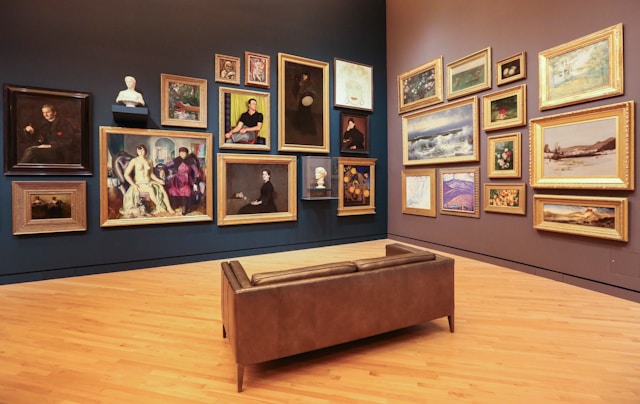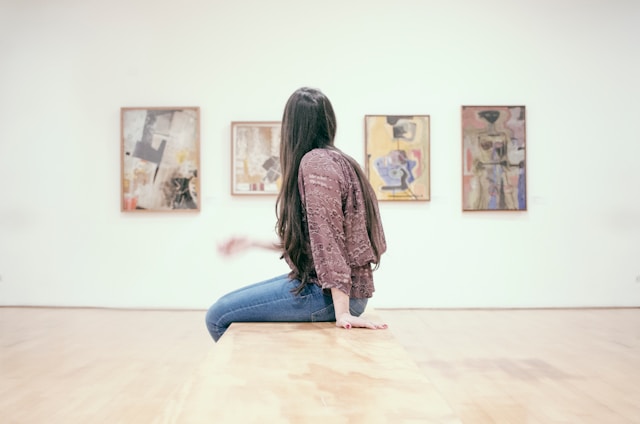How Artists Should Approach Galleries for Possible Representation

Finding the right gallery to represent your work can be a pivotal step in an artist’s career. Galleries can provide exposure, sales opportunities, and professional credibility. However, approaching galleries can be daunting, especially for emerging artists. This guide will outline effective strategies for artists to approach galleries, ensuring you present yourself and your work in the best light.
Understanding the Gallery Landscape
Before reaching out to galleries, it’s essential to understand the different types of galleries and how they operate:
- Commercial Galleries: These galleries focus on selling artwork and usually take a commission from sales. They often seek artists whose work has a market demand.
- Non-Profit Galleries: These spaces may focus on exhibitions and community engagement rather than sales. They often prioritize emerging artists and experimental work.
- Co-Operative Galleries: These are run by groups of artists who share space and responsibilities. They can be a good option for emerging artists looking for representation.
- Online Galleries: With the rise of digital platforms, online galleries can offer exposure without the geographical limitations of traditional galleries.
Understanding the landscape will help you identify which galleries align with your artistic vision and career goals.

Researching Potential Galleries
Before reaching out, thorough research is crucial. Here’s how to effectively evaluate galleries:
- Look at Their Exhibitions: Review past and current exhibitions to understand the gallery’s style, mission, and the types of artists they represent. This will help you determine if your work fits their aesthetic.
- Review Their Artist Roster: Take note of the artists they currently represent. Are they similar in style or theme to your work? This can indicate whether your art would complement their offerings.
- Check Their Social Media and Website: Galleries often use social media to promote their artists and exhibitions. An active online presence can indicate a gallery’s commitment to marketing.
- Attend Openings and Events: Visiting galleries during openings or events allows you to experience their environment and meet the staff and other artists. This firsthand experience is invaluable.
Preparing Your Portfolio
Your portfolio is your calling card, and it should effectively showcase your work. Here are some key elements to consider:
- High-Quality Images: Ensure that all images are high-resolution and accurately represent your work. Poor photography can undermine your art.
- Curated Selection: Include a cohesive selection of your best work. It’s better to show fewer pieces that represent your style than to overwhelm with quantity.
- Artist Statement and CV: Include an artist statement that articulates your vision and creative process, as well as a curriculum vitae (CV) detailing your exhibitions, awards, and relevant experience.
- Website and Social Media Links: Make it easy for galleries to find more information about you. Include links to your website and any relevant social media accounts.
Crafting a Thoughtful Approach
Once you’ve identified potential galleries and prepared your portfolio, it’s time to reach out. Here are steps for crafting a thoughtful approach:
1. Personalize Your Communication
Avoid generic emails. Take the time to address the gallery director or curator by name and mention specific exhibitions that resonate with you. This shows you’ve done your homework and genuinely appreciate their work.
2. Keep It Concise
Gallery directors are often busy, so keep your email or letter concise. Introduce yourself, provide a brief background, and explain why you’re interested in their gallery. Attach your portfolio or include a link to view it online.
3. Highlight Your Unique Selling Points
What sets your work apart? Whether it’s your technique, subject matter, or personal story, make sure to communicate this clearly. Galleries want to know what makes you and your art distinctive.
4. Be Professional
Use a professional tone and check for spelling and grammatical errors. A polished presentation reflects your seriousness as an artist.
Follow-Up Etiquette
After you’ve sent your initial inquiry, it’s important to know when and how to follow up:
- Give It Time: Allow at least two weeks for a response before following up. Galleries receive many inquiries, and a delayed response is not uncommon.
- Polite Reminder: If you don’t receive a response, send a polite follow-up email. Express your continued interest and inquire whether they had the chance to review your work.
- Respect Their Decision: If a gallery declines to represent you, respond graciously. Ask for feedback if appropriate, and use it to improve your approach for the future.
Building Relationships
Once you’ve made initial contact with a gallery, focus on building a relationship. This can be crucial for future opportunities:
- Engage with Their Events: Attend gallery openings and events, and network with the staff and other artists. This can create familiarity and increase your chances of being considered for future exhibitions.
- Stay Informed: Keep an eye on the gallery’s activities and updates. Engaging with their social media posts or newsletters can help maintain your presence in their mind.
- Consider Collaborations: If appropriate, propose collaborative projects or events. This shows initiative and can lead to deeper connections within the gallery.
Conclusion
Approaching galleries for representation can be a challenging yet rewarding process. By understanding the gallery landscape, conducting thorough research, preparing a polished portfolio, crafting thoughtful communications, and building genuine relationships, you can enhance your chances of securing representation. Remember that the journey may take time, and each interaction is a step towards finding the right gallery that aligns with your artistic vision and career aspirations. Stay persistent and open to learning, and you’ll find the right opportunities to showcase your art.
Contact Painted Canvas for online representation.

